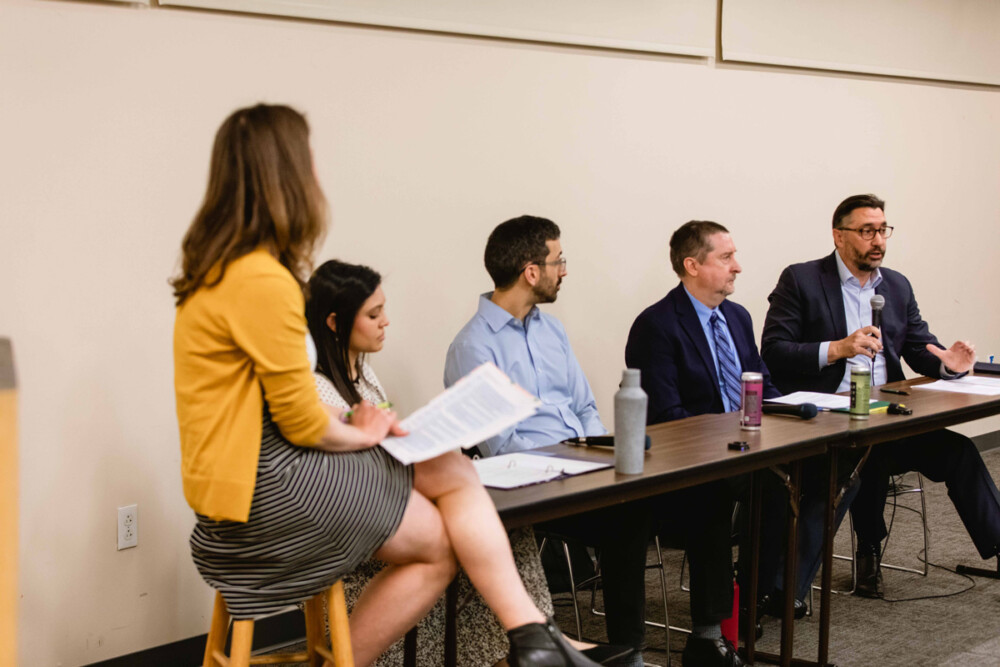
In Pennsylvania’s Push Toward Renewable Energy, Consumers Have “Power”
Green Philly’s panel discussion on sustainable energy and consumer choice highlighted the potential for individuals to impact the state’s energy transition.
With great power comes great responsibility.
That was the message for Philadelphians at a panel discussion hosted by Green Philly on Wednesday night at the Friends Center focused on sustainable energy and energy consumer rights.
Pennsylvania is ranked 45th in the country for renewable energy generation, with just 3% of its production coming from wind, solar, and hydropower. But the state’s choice-based energy market gives residents the opportunity to select their own provider and help push for progress.
“The fact is that Pennsylvania is behind. We have a lot of work to do,” Divya Desai, executive director of the Energy Co-op, said. “Consumers have the power to demand renewable energy. We can vote at the polls and we can vote with our dollars.”
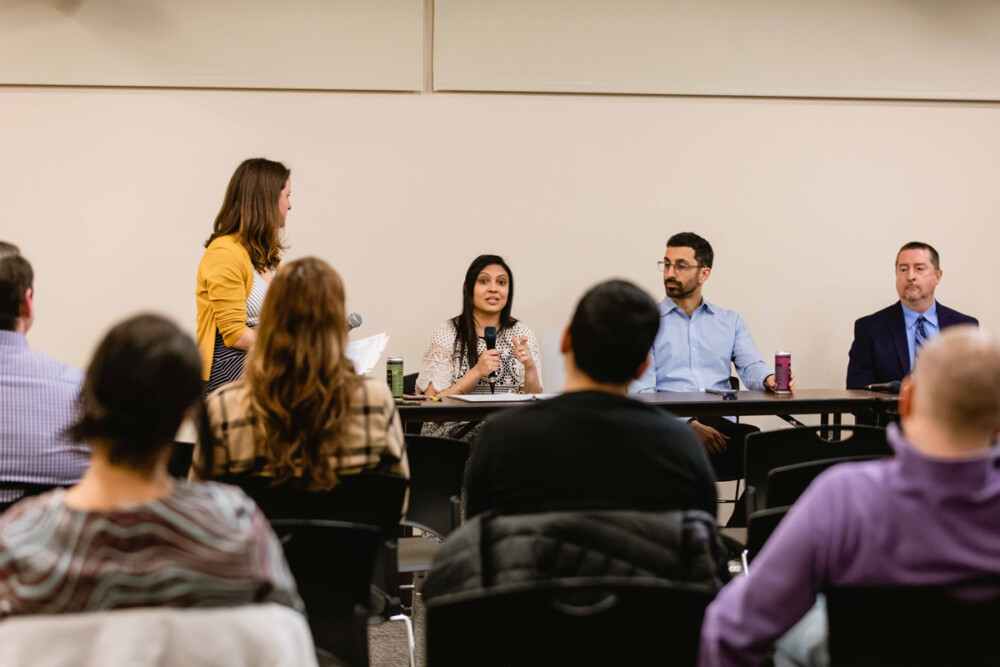
The 1996 Electric Competition Act opened the state’s energy market up so that consumers can receive their power from anyone, not just power plant-owning utilities, as Dan Mumford, Director of the Pennsylvania Utility Commission’s Office of Competitive Market Oversight, explained. The result was to turn residents from passive consumers into active shoppers.
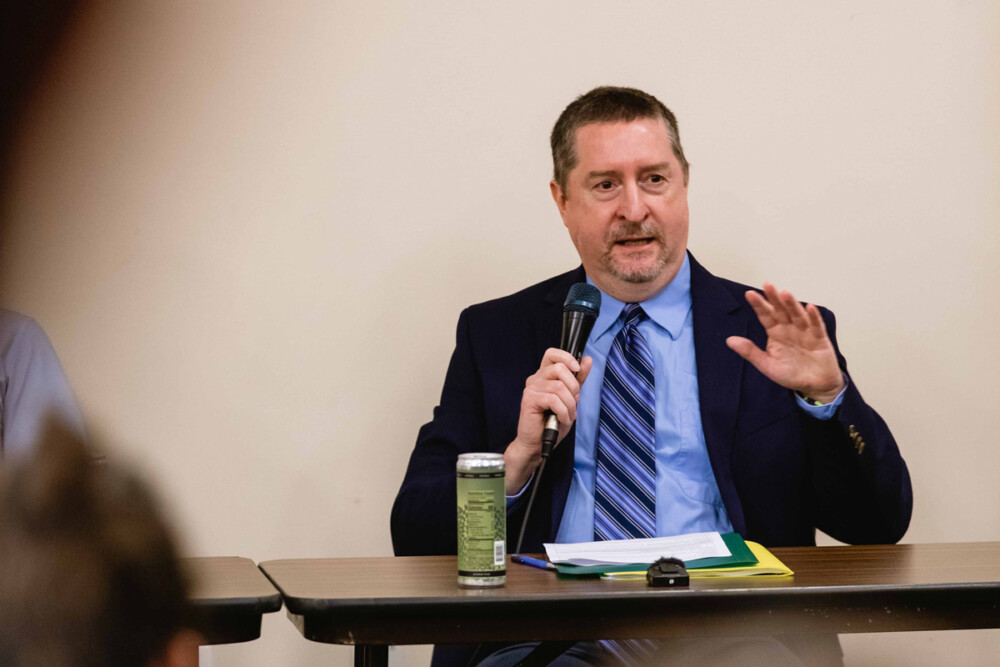
“There’s a great opportunity with choice for consumers,” Michael Gruin, an energy attorney with Stevens & Lee, said. “There’s also greater responsibility to become knowledgeable about their usage, their supply options, regulations, and who’s who.”

How can consumers choose renewable energy?
Using the PA Power Switch website, energy consumers can decide between fixed and variable rates, shop for the best price, and, most important in the broader push to transition toward clean energy, select providers that offer energy generated from renewable resources. Even though there is sometimes a premium associated with buying sustainable energy, Mumford said 37 percent of households that shop opt for a renewable product. That’s especially important in a state with a long history of coal mining and natural gas production and a legislature reluctant to push for an energy transition.
Pennsylvania’s alternative energy portfolio standard – a mandate for the amount of the state’s energy that comes from alternative energy sources- hasn’t been updated since hitting its 18 percent target in 2021, which sits well below the targets of neighboring states like New York (70 percent by 2030); New Jersey (50 percent by 2030); and Delaware (28 percent by 2030 and 40 percent by 2035), Desai said. Notably, the Pennsylvania target also includes nonrenewable energy sources.
“Pennsylvania’s requirements are simply not ambitious enough to drive consequential renewable energy production and will not impact carbon emissions-cutting in the state,” Desai said.
She urged the development of a more robust standard, which she said “would propel the state forward in renewable energy development, drive economic progress, create jobs, and ultimately drive down the cost of renewable energy.”
How is Philadelphia doing towards a clean energy future?
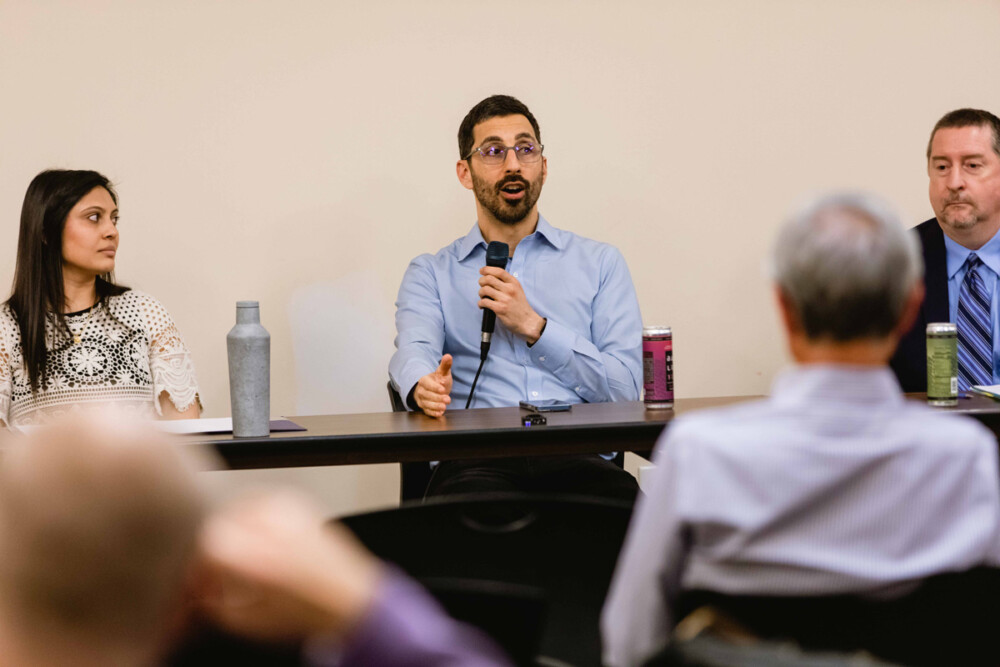
For its part, Philadelphia is on a positive trajectory in the energy transition, Dom McGraw, deputy director of municipal services for the city’s Office of Sustainability, said. The Municipal Energy Master Plan released in 2017 targeted a 50 percent reduction in greenhouse gas emissions by 2030.
The city has already reached a 44 percent reduction thanks to a cleaner energy grid, he said. And construction is expected to be completed this year on a solar energy project in Adams County that would boost the portion of the city’s energy from alternative sources to 30 percent. McGraw said the city is “trying to find innovative ways to move the needle,” highlighting a program that allows homes that generate solar power to donate their energy to support low- and moderate-income families.
Although Pennsylvania’s renewable energy targets fall below what’s needed to combat climate change and stabilize the state’s future, energy choice gives everyone a chance to help create change. And informed residents can push their representatives to advocate for new ideas like community solar, which allows individuals and businesses to share the benefits of a solar project, Gruin said. A more ambitious target in the state’s portfolio standard—or a shift in the portion required to come from sustainable sources—will only happen if elected officials in Harrisburg feel the pressure from their constituents, the panelists agreed.
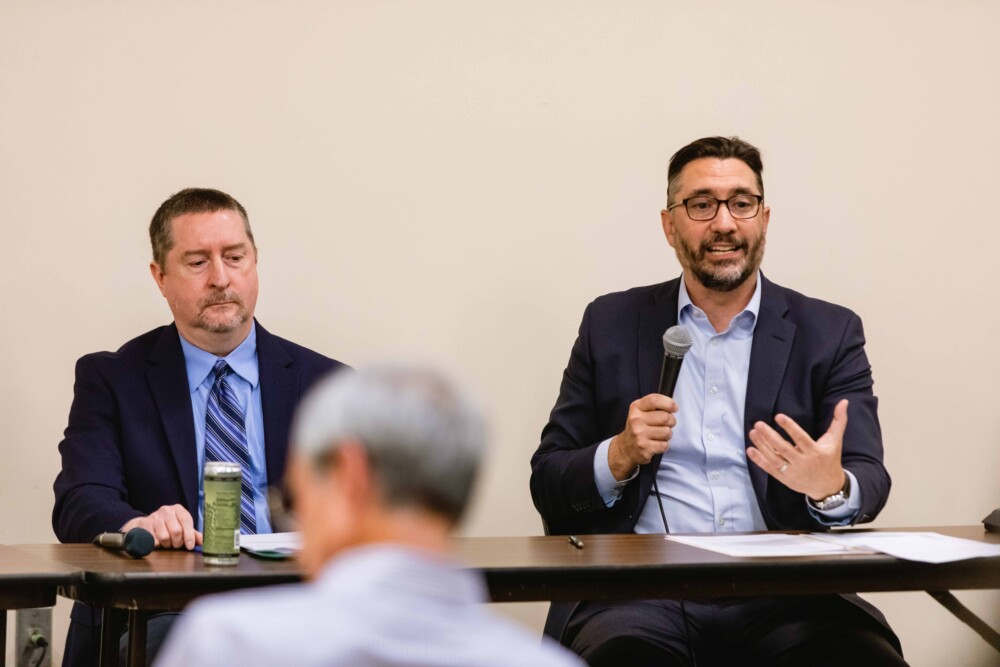
“Ultimately, an increase in those levels has to come from the general assembly,” Mumford said. “In the meantime, I’d urge consumers to exercise your power. If you want renewable energy, buy renewable energy.”
Photos: Lexy Pierce Photography








